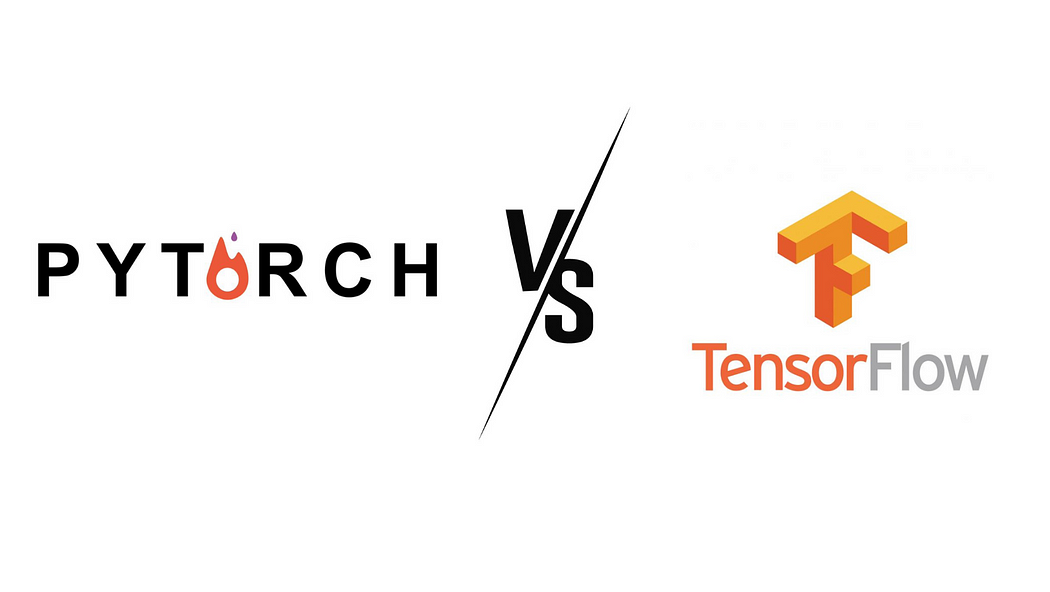TensorFlow与PyTorch对比:迁移学习在图像分类中的最佳框架选择
发布时间: 2024-09-03 16:00:05 阅读量: 138 订阅数: 46 


# 1. 迁移学习和深度学习框架概述
## 1.1 迁移学习基础
迁移学习是一种机器学习方法,它允许一个已经学习好的模型应用于新的但相关的问题。它减少了训练时间和数据需求,因为模型可以利用之前学习到的特征来加速新任务的学习过程。迁移学习在图像分类、自然语言处理和其他领域取得了巨大成功。
## 1.2 深度学习框架的重要性
深度学习框架为研究人员和开发者提供了一套高级API和工具,用于构建、训练和部署深度神经网络。流行的框架如TensorFlow、PyTorch、Keras等已经改变了深度学习项目的开发方式,它们通过优化性能和易用性来简化复杂的工作流程。
## 1.3 本章小结
在本章中,我们介绍了迁移学习的基础概念及其在深度学习中的作用。同时,我们强调了深度学习框架的重要性,它们不仅加速了模型的开发过程,还为研究提供了强大的工具。接下来的章节将分别深入探讨TensorFlow和PyTorch,以及它们在图像分类项目中的应用。
# 2. TensorFlow基础与图像分类
## 2.1 TensorFlow的基本构成和安装
### 2.1.1 TensorFlow的计算图和会话
在 TensorFlow 中,计算图(Graph)是所有计算过程的定义,它描述了各种张量(Tensor)之间的关系。图是由节点(Node)和边(Edge)组成的,节点代表操作(Operation),边代表在这些操作之间流动的数据。TensorFlow 支持在本地或云端进行复杂的数值计算,并且对这些计算进行优化。
会话(Session)用于运行 TensorFlow 计算图。它提供了环境,用于运行图中的操作,并将操作输出到张量变量。当你创建一个会话时,计算图中的操作会在会话中运行。会话分为两种:默认会话和非默认会话。
下面是一个简单的 TensorFlow 会话的使用示例:
```python
import tensorflow as tf
# 定义两个常量节点
a = tf.constant(2)
b = tf.constant(3)
# 定义一个加法操作,将 a 和 b 作为输入
addition = tf.add(a, b)
# 创建一个默认会话来运行图
with tf.Session() as sess:
# 运行加法操作,计算结果
result = sess.run(addition)
print(result) # 输出: 5
```
### 2.1.2 安装TensorFlow和环境配置
安装 TensorFlow 可以通过 Python 的包管理工具 pip 来完成。TensorFlow 提供了针对 CPU 和 GPU 的不同版本,安装前请确认你的系统环境。
在终端或命令提示符中,可以使用以下命令来安装 CPU 版本的 TensorFlow:
```bash
pip install tensorflow
```
如果要安装 GPU 版本的 TensorFlow,需要在你的系统中安装 CUDA 和 cuDNN,并且确保它们的版本与 TensorFlow 的版本兼容。然后使用以下命令安装:
```bash
pip install tensorflow-gpu
```
安装完成后,你可以使用 Python 的交互模式来确认 TensorFlow 是否安装正确:
```python
import tensorflow as tf
print(tf.__version__)
```
如果安装成功,上述代码会输出 TensorFlow 的版本号。
## 2.2 TensorFlow在图像分类中的应用
### 2.2.1 数据预处理和增强
在机器学习任务中,特别是图像分类,数据预处理是至关重要的一步。它包括缩放图像到统一尺寸、归一化像素值、增强数据集等操作。数据增强能够通过旋转、缩放、裁剪等方法人工扩展训练集,提高模型的泛化能力。
TensorFlow 提供了强大的数据处理工具,如 `tf.data` API,可以通过组合简单的操作来构建复杂的数据管道。下面是一个使用 `tf.data` API 进行数据预处理和增强的示例:
```python
import tensorflow as tf
# 创建一个数据集
dataset = tf.data.Dataset.from_tensor_slices((data, labels))
# 应用预处理和增强
dataset = dataset.map(lambda image, label: (tf.image.resize(image, [224, 224]), label))
# 数据增强,例如随机裁剪
def random_crop(image):
return tf.image.random_crop(image, size=[224, 224, 3])
dataset = dataset.map(lambda image, label: (random_crop(image), label))
# 打乱数据集
dataset = dataset.shuffle(buffer_size=10000)
# 批量化数据集
dataset = dataset.batch(batch_size=32)
```
### 2.2.2 构建卷积神经网络模型
卷积神经网络(CNN)是图像分类任务中的常用模型。在 TensorFlow 中,可以通过定义层的顺序和类型来构建 CNN 模型。`tf.keras` 是 TensorFlow 的高级API,它提供了构建和训练模型的简单而强大的方式。
构建一个简单的 CNN 模型可以按照以下步骤进行:
```python
import tensorflow as tf
# 构建一个序贯模型
model = tf.keras.models.Sequential([
# 卷积层
tf.keras.layers.Conv2D(32, (3, 3), activation='relu', input_shape=(224, 224, 3)),
# 池化层
tf.keras.layers.MaxPooling2D(2, 2),
# Dropout层减少过拟合
tf.keras.layers.Dropout(0.25),
# Flatten层将多维输入一维化
tf.keras.layers.Flatten(),
# 全连接层
tf.keras.layers.Dense(128, activation='relu'),
# Dropout层
tf.keras.layers.Dropout(0.5),
# 输出层使用softmax激活函数
tf.keras.layers.Dense(10, activation='softmax')
])
# 编译模型
***pile(optimizer='adam', loss='sparse_categorical_crossentropy', metrics=['accuracy'])
```
### 2.2.3 训练和验证模型
在定义好模型后,接下来的步骤是使用训练数据来训练模型,并用验证数据来评估模型的性能。在 TensorFlow 中,可以使用模型的 `fit` 方法进行训练,并使用 `evaluate` 方法进行验证。
```python
# 训练模型
history = model.fit(train_dataset, epochs=10, validation_data=val_dataset)
# 评估模型
test_loss, test_acc = model.evaluate(test_dataset)
print('Test accuracy:', test_acc)
```
在训练过程中,`history` 对象会记录损失值和准确率等指标。这些记录可以帮助我们绘制训练曲线,并且有助于调试和优化模型。
## 2.3 TensorFlow模型的迁移学习
### 2.3.1 加载预训练模型
迁移学习的核心思想是利用在大规模数据集(如ImageNet)上预先训练好的模型来解决特定任务。在 TensorFlow 中,可以利用 `tf.keras.applications` 模块来加载预训练的模型。
```python
from tensorflow.keras.applications import MobileNetV2
# 加载预训练的 MobileNetV2 模型,不包括顶层的分类器
pretrained_model = MobileNetV2(weights='imagenet', include_top=False)
# 固定预训练模型的权重
for layer in pretrained_model.layers:
layer.trainable = False
```
### 2.3.2 微调和模型评估
加载完预训练模型之后,我们可以根据自己的数据集来微调模型。微调时,通常只调整模型的最后几层,因为这些层包含的是通用特征,而最后的分类器则与特定任务密切相关。微调过程中,模型的大部分权重保持不变,只更新顶层的权重。
```python
# 在预训练模型上添加新的分类层
x = pretrained_model.output
x = tf.keras.layers.GlobalAveragePooling2D()(x)
x = tf.keras.layers.Dense(1024, activation='relu')(x)
predictions = tf.keras.layers.Dense(num_classes, activation='softmax')(x)
# 构建最终的模型
model = tf.keras.Model(inputs=pretrained_model.input, outputs=predictions)
# 编译模型,这里使用一个较小的学习率
***pile(optimizer=tf.keras.optimizers.Adam(lr=1e-4),
loss='sparse_categorical_crossentropy',
metrics=['accuracy'])
# 微调模型
history_fine = model.fit(train_dataset, epochs=10, validation_data=val_dataset)
```
模型微调后,使用与之前相同的评估方法来验证模型的性能:
```python
test_loss, test_acc = model.evaluate(test_dataset)
print('Test accuracy:', test_acc)
```
微调过程允许模型在保持已有知识的同时学习新任务的特征。通过这种方式,即使是有限的数据集也能训练出表现良好的模型。
# 3. PyTorch基础与图像分类
PyTorch是由Facebook的AI研究团队开发的开源机器学习库,它使用动态计算图,提供了极大的灵活性和易用性,尤其在研究社区中受到广泛欢迎。在本章节中,我们将深入探讨PyTorch的基础知识,并通过图像分类任务的实际应用,展示如何使用PyTorch构建和训练深度学习模型。同时,我们
0
0





